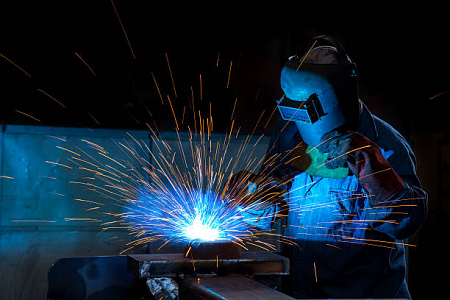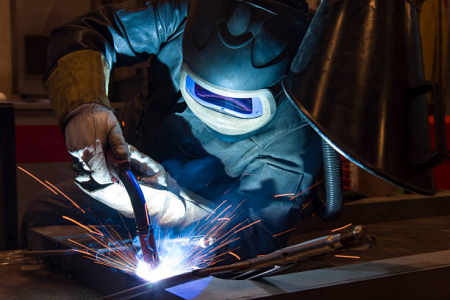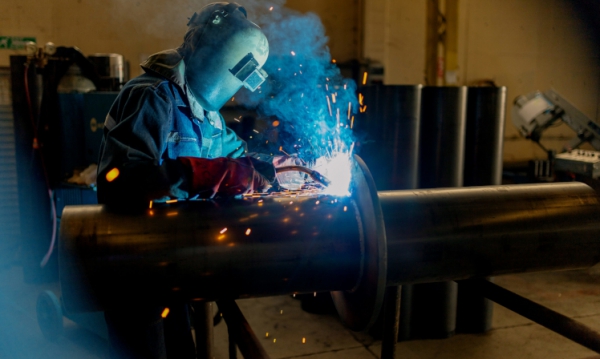Arc welding is commonly used to join metals.This process takes place through the electrical circuit- A welding torch with a bend is usually used for robotic arc welding applications to provide the weld's access
The power source for welding comes from a direct current (DC) or alternating current (AC) machine, which forms an electrical circuit through the electrode's conductive wires to the part.
This circuit is closed by the contact of the part with the electrode.The arc formed is the part where the circuit encounters the greatest resistance and is the point where the heat source is generated. The high temperature generated in the arc allows the melting of the base metal and the additional rod.
This temperature also allows for the combustion of the component parts of the coating, which, when gasified, fulfill several functions, such as: deoxidizing, eliminating impurities, facilitating the passage of the current, and especially protecting the molten metal from atmospheric influences.
This system is characterized by its versatility and economy. It can be applied in the union of different metals, in small or large jobs. This process's operation must adjust to the technical indications required by the metal to be welded and the electrodes to be used.
There are basically three types of energy sources used in this process which are:
- Transformers (AC);
- Rectifiers (DC);
- Generators (DC).
Direct current (DC) - Examples: Car dynamo, battery, radio battery, a generator to weld.
Alternating current (AC) - Examples: Residential lighting, transformers for welding.

Welding
Electrical devices transform the alternating current, lowering the supply voltage to a voltage and intensity suitable for welding. This alternating current of low voltage (6 volts to 75 volts in a vacuum) and regular intensity allows obtaining the heat source necessary for welding.
It is a core composed of sheets of silicon steel and two-wire windings (coils), the high voltage, primary, and the low voltage, secondary.
The electric current that circulates through the primary generates a field of magnetic force lines in the nucleus. This field, acting on the secondary winding, produces a low voltage and high-intensity current used to weld.
Advantages and disadvantages of transformers
Benefits
- Low acquisition cost
- Longer duration and less maintenance expense;
- Higher yield and less empty consumption;
- Less influence of magnetic blowing.
Disadvantages
- Limitation in the use of some electrodes;
- Difficulty in establishing and maintaining the arc.
Rectifier

Rectifier
It is a machine that transforms alternating current into pulsating continuous, very similar to the generator current. The application of this class of current allows welding with any electrode. The device itself consists of a transformer and a rectifier. The most used and most effective rectifiers are those of silicon diodes.
Advantages of rectifiers
- It has alternating and direct current;
- Provides stability and fine-tuning current, especially in low orders;
- Allows uniform loading in the first three phases of feeding;
- Low maintenance cost;
- Low noise.
Generator

Welding machines
Machines of this type generate low voltage direct current and are used for welding.
Composed of a motor, with which it is possible to obtain mechanical energy in the form of a rotating movement. This movement is transmitted in a medium way to the axes common to the generator itself and allows obtaining the current suitable for welding.
There are two types of welding machines that are characterized by their propulsion system:
- Driven by an electric motor.
- Driven by a combustion engine.
Its main characteristic is the type of output current, suitable for all types of electrodes.
Advantages and disadvantages of generators
- Arch stability;
- Have several polarities;
- Progressive intensity adjustment;
- On some machines, you can select the output voltage;
- The biggest advantage of machines powered by a combustion engine is the possibility of welding in regions without electricity.
This article was brought to you by Welding Superstore, one of the biggest welding retailers in Australia and a distributor of high quality welding boots.




